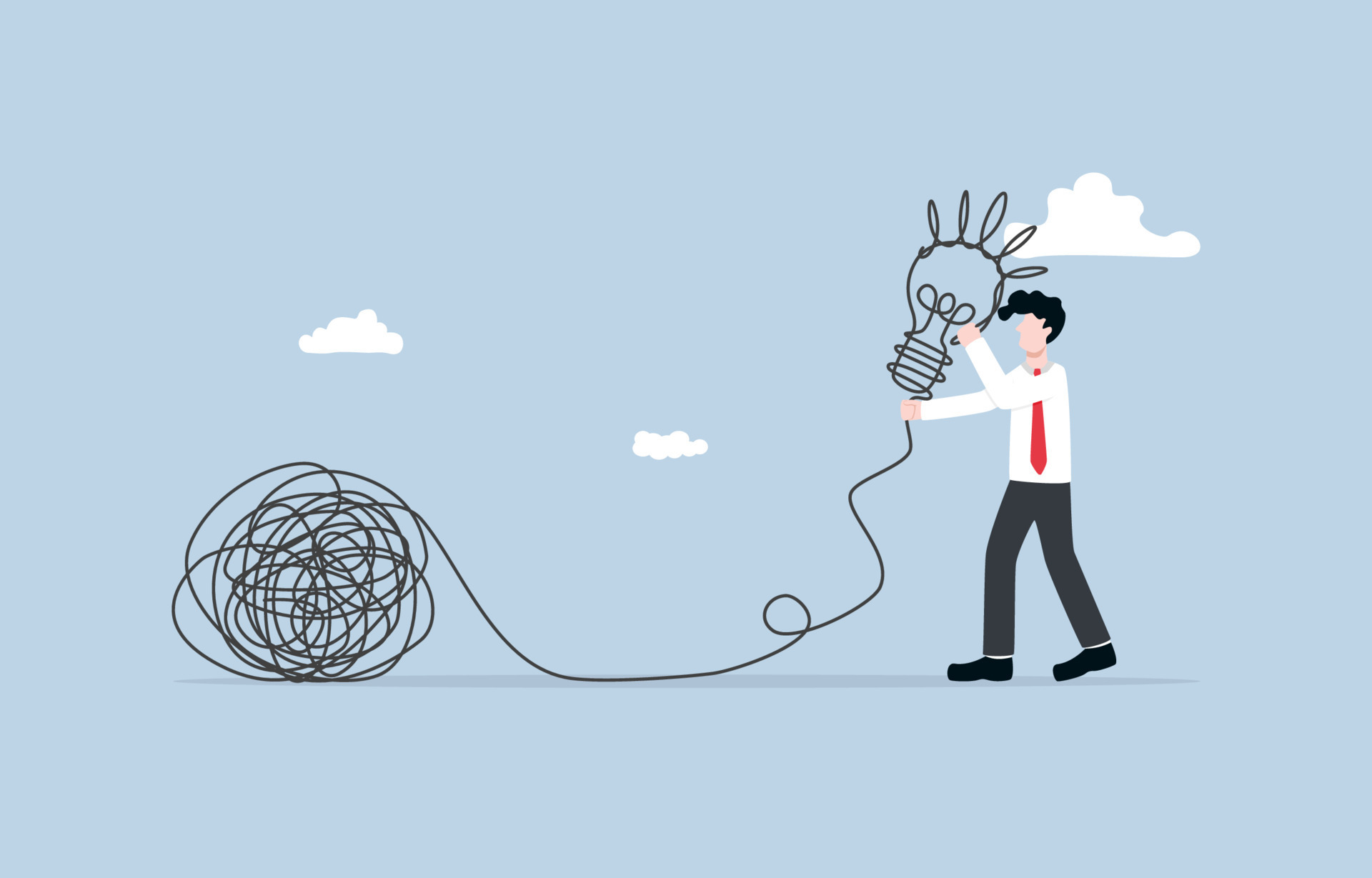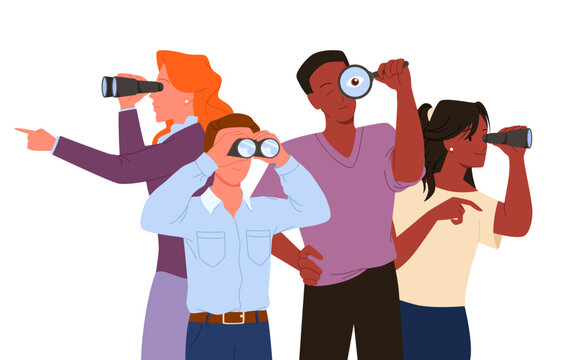Embracing problems as opportunities for growth and learning is not just a mindset, but a powerful approach to life. By adopting a growth mindset, individuals can cultivate resilience, creativity, and adaptability, enabling them to navigate challenges with confidence and perseverance. Learning from failure becomes a stepping stone towards success, while collaboration and innovation thrive in environments that encourage problem-solving. Education plays a pivotal role in shaping this mindset, empowering students to develop critical thinking skills and a positive outlook towards challenges. Ultimately, by reframing problems as opportunities, individuals and communities can foster a culture of continuous improvement and inspire positive change in the world.

Embracing Problems: Turning Challenges into Opportunities for Growth
Introduction
“The gem cannot be polished without friction, nor man perfected without trials.” – Confucius
In the journey of life, challenges are inevitable. Yet, how we perceive and respond to these challenges can make all the difference. What if we reframed our perspective and saw problems not as obstacles, but as opportunities for learning and growth? This article delves into the transformative power of embracing problems, offering insights and strategies to turn adversity into advantage.
At the core of our ability to navigate life’s challenges lies our mindset. By cultivating a growth mindset, we can harness the potential of problems to propel us forward. Throughout this article, we will explore the pillars of resilience, creativity, and adaptability, providing practical tips and tricks to equip you with the tools necessary to thrive in the face of adversity.

The Power of Perspective
Define the concept of mindset: Mindset refers to the beliefs and attitudes that shape how we perceive and respond to the world around us. It encompasses our views on our abilities, intelligence, and the nature of challenges. Our mindset influences how we interpret events, approach problems, and ultimately, the outcomes we achieve.
Contrast fixed mindset vs. growth mindset: In a fixed mindset, individuals believe that their abilities and intelligence are static traits that cannot be changed. They may shy away from challenges, fearing failure and viewing setbacks as indications of their inherent limitations. On the other hand, a growth mindset is characterized by the belief that abilities can be developed through dedication and effort. Those with a growth mindset embrace challenges as opportunities to learn and grow, seeing setbacks as temporary setbacks rather than reflections of their abilities.
Discuss the benefits of adopting a growth mindset: Adopting a growth mindset offers numerous benefits that extend beyond academic or professional success. Firstly, it fosters resilience, allowing individuals to bounce back from setbacks and persevere in the face of adversity. By viewing challenges as opportunities for growth, individuals with a growth mindset are more likely to adapt to change and navigate uncertainty with confidence. Furthermore, a growth mindset cultivates a love for learning, as individuals are motivated by the belief that their efforts will lead to improvement and mastery. Overall, embracing a growth mindset empowers individuals to approach life’s challenges with curiosity, resilience, and a sense of possibility.

III. Resilience and Adaptability
Explore the role of resilience in overcoming obstacles: Resilience is the ability to bounce back from setbacks, adapt to change, and persevere in the face of adversity. It is a crucial trait that enables individuals to navigate life’s challenges with courage and determination. Resilient individuals are not immune to difficulties, but they possess the inner strength and resilience to overcome obstacles and emerge stronger on the other side.
Share examples of individuals or organizations that have demonstrated resilience in the face of challenges: Throughout history, countless individuals and organizations have demonstrated remarkable resilience in the face of adversity. For example, Nelson Mandela’s unwavering determination and resilience enabled him to endure 27 years of imprisonment and lead South Africa to freedom and democracy. Similarly, companies like Apple and Microsoft have faced numerous setbacks and failures on their path to success but have emerged stronger through their resilience and perseverance.
Discuss how overcoming challenges can lead to personal growth and increased adaptability: Overcoming challenges often serves as a catalyst for personal growth and development. When individuals confront and overcome obstacles, they develop resilience, self-confidence, and problem-solving skills. Moreover, navigating challenges forces individuals to adapt and innovate, leading to increased adaptability and flexibility. By embracing challenges as opportunities for growth, individuals can transform setbacks into stepping stones toward greater success and fulfillment.

Creativity and Innovation
Highlight the link between problem-solving and creativity: Creativity is a powerful tool for problem-solving, as it enables individuals to think outside the box, generate novel ideas, and find innovative solutions to complex problems. When faced with challenges, individuals who approach problem-solving with creativity are more likely to come up with unique and effective solutions that may not be apparent through conventional methods. By tapping into their creative potential, individuals can unlock new possibilities and overcome obstacles with ingenuity and imagination.
Share examples of how problems have sparked innovation and led to new discoveries: Throughout history, problems and challenges have served as catalysts for innovation and discovery. For instance, the invention of the light bulb by Thomas Edison was born out of the need to find a reliable source of artificial light. Similarly, the development of the internet was driven by the challenge of creating a decentralized communication network that could withstand nuclear attacks. These examples illustrate how problems can inspire creativity and drive innovation, leading to groundbreaking discoveries that revolutionize industries and change the world.
Discuss the importance of embracing creativity as a tool for overcoming obstacles: Embracing creativity is essential for overcoming obstacles because it allows individuals to approach challenges from fresh perspectives and explore unconventional solutions. Creativity enables individuals to break free from conventional thinking patterns and find innovative ways to address complex problems. By encouraging creativity as a problem-solving tool, individuals can unlock their full potential and overcome obstacles with confidence and resourcefulness. Ultimately, embracing creativity empowers individuals to turn challenges into opportunities for growth and transformation.

Learning from Failure
Explore the concept of failure as a learning opportunity: Failure is an inevitable part of life, but it can also be a valuable learning opportunity. Rather than viewing failure as a final outcome, it should be seen as a stepping stone on the path to success. Failure provides valuable feedback, highlighting areas for improvement and offering insights into what went wrong. By embracing failure as a learning opportunity, individuals can grow and develop resilience, perseverance, and problem-solving skills.
Share stories of individuals who have learned valuable lessons from failure and used them to achieve success: Countless successful individuals have experienced failure on their journey to success. For example, J.K. Rowling faced multiple rejections before finally publishing the Harry Potter series, which went on to become one of the best-selling book series in history. Similarly, Walt Disney was fired from a newspaper job for lacking creativity, but he went on to create one of the most iconic entertainment companies in the world. These stories illustrate how failure can be a catalyst for growth and success, rather than a deterrent.
Discuss strategies for reframing failure and turning setbacks into opportunities for growth: Reframing failure involves shifting perspective and viewing setbacks as opportunities for growth and learning. One strategy is to focus on the lessons learned from failure rather than dwelling on the negative outcomes. Additionally, practicing self-compassion and maintaining a growth mindset can help individuals bounce back from failure with resilience and determination. By reframing failure as a natural part of the learning process, individuals can overcome setbacks and emerge stronger and more resilient than before.
Cultivating a Culture of Problem-Solving
Discuss the importance of fostering a culture that encourages problem-solving and innovation: A culture that values problem-solving and innovation is essential for organizations to thrive in today’s rapidly changing world. By fostering a culture that encourages creativity, curiosity, and experimentation, organizations can stay ahead of the curve and adapt to new challenges and opportunities. Moreover, a problem-solving culture fosters a sense of ownership and accountability among employees, empowering them to take initiative and contribute their ideas to solving problems.
Share strategies for creating an environment where individuals feel empowered to take risks and explore new solutions: Creating an environment where individuals feel empowered to take risks and explore new solutions requires a supportive and inclusive culture. Leaders can foster this environment by encouraging open communication, rewarding experimentation, and providing opportunities for professional development and growth. Additionally, providing resources and support for employees to test and iterate on new ideas can help foster a culture of innovation and creativity.
Highlight the benefits of collaboration and diversity in problem-solving: Collaboration and diversity are essential components of effective problem-solving. By bringing together individuals with diverse perspectives, backgrounds, and skills, organizations can leverage the collective wisdom and creativity of their teams to tackle complex problems. Collaboration fosters creativity, sparks innovation, and leads to more effective and sustainable solutions. Moreover, a diverse team brings a wide range of perspectives and experiences to the table, enabling organizations to anticipate and address a broader range of challenges. By embracing collaboration and diversity in problem-solving, organizations can drive innovation and achieve better outcomes for their employees, customers, and communities.

VII. The Role of Education
Explore how education can play a role in teaching problem-solving skills: Education plays a crucial role in equipping students with the skills they need to navigate the complexities of the modern world, and problem-solving is at the heart of this endeavor. By incorporating problem-solving skills into the curriculum, educators can empower students to tackle real-world challenges with confidence and creativity. Teaching problem-solving skills not only prepares students for academic success but also equips them with essential life skills that they can apply in their personal and professional lives.
Discuss strategies for educators to help students develop critical thinking, creativity, and resilience: Educators can employ various strategies to foster problem-solving skills in students. For instance, encouraging inquiry-based learning and project-based learning can provide students with opportunities to explore complex problems and develop critical thinking skills. Additionally, promoting creativity through activities such as brainstorming sessions, design challenges, and artistic expression can help students think outside the box and generate innovative solutions. Moreover, teaching resilience by emphasizing the importance of perseverance, adaptability, and learning from failure can help students develop the resilience they need to overcome obstacles and thrive in the face of adversity.
Share examples of innovative educational approaches that promote problem-solving: There are many innovative educational approaches that promote problem-solving skills in students. For example, the STEM (Science, Technology, Engineering, and Mathematics) education movement emphasizes hands-on learning and real-world problem-solving, allowing students to apply their knowledge and skills to solve authentic problems. Similarly, programs such as Design Thinking and Project-Based Learning encourage students to collaborate, iterate, and innovate as they work towards solving complex problems. Moreover, initiatives that integrate technology into the classroom, such as coding clubs and robotics competitions, provide students with opportunities to develop computational thinking and problem-solving skills in engaging and interactive ways. By embracing these innovative educational approaches, educators can prepare students to thrive in an increasingly complex and interconnected world.

VIII. Practical Tips for Embracing Problems
Embracing problems as opportunities for learning and growth is a mindset that can be cultivated through deliberate practice and intentionality. Here are some actionable tips and strategies for adopting this mindset:
- Reframe challenges as opportunities: Instead of viewing problems as insurmountable obstacles, reframe them as opportunities for growth and learning. Challenge yourself to see setbacks as temporary roadblocks on the path to success, rather than permanent barriers.
- Seek feedback: Actively seek feedback from others, whether it’s from mentors, peers, or experts in your field. Feedback provides valuable insights and perspectives that can help you identify blind spots, refine your approach, and learn from your mistakes.
- Stay open to new ideas and perspectives: Cultivate a mindset of curiosity and openness to new ideas and perspectives. Recognize that there are often multiple ways to approach a problem, and be willing to consider alternative viewpoints and solutions.
- Practice resilience: Develop resilience by embracing failure as a natural part of the learning process. Instead of letting setbacks discourage you, use them as opportunities to reflect, learn, and grow stronger. Remember that resilience is not about avoiding failure, but about bouncing back from it with renewed determination and perseverance.
- Take calculated risks: Don’t be afraid to take calculated risks and step outside of your comfort zone. Taking risks can lead to new opportunities for growth and innovation, and can help you develop confidence in your ability to navigate uncertainty and overcome challenges.
- Cultivate a growth mindset: Adopt a growth mindset by believing in your ability to learn and improve over time. Embrace challenges as opportunities to stretch your abilities and develop new skills, rather than as threats to your self-worth or competence.
- Celebrate progress: Celebrate small victories along the way, even if they’re just incremental steps towards your larger goals. Recognize and acknowledge your efforts and achievements, and use them as motivation to keep moving forward.
By incorporating these practical tips into your daily life, you can develop a mindset that sees problems as opportunities for learning and growth, ultimately empowering you to overcome obstacles and achieve your goals with confidence and resilience.
Real-Life Examples
- Elon Musk and SpaceX: Elon Musk, the CEO of SpaceX, faced numerous setbacks and challenges in his quest to revolutionize space travel. Despite facing multiple failures, including three consecutive rocket launch failures in 2008, Musk remained undeterred in his pursuit of his vision. Instead of viewing these setbacks as defeats, Musk and his team at SpaceX embraced them as opportunities for learning and improvement. Their resilient mindset and willingness to learn from failure ultimately led to the successful launch of the Falcon 1 rocket in 2008, making SpaceX the first privately-funded company to launch a spacecraft into orbit. Today, SpaceX continues to push the boundaries of space exploration, with ambitious goals of colonizing Mars and making space travel accessible to all.
- The Walt Disney Company: Walt Disney faced numerous challenges and setbacks throughout his career, including bankruptcy, failed business ventures, and creative criticism. However, Disney’s unwavering belief in the power of imagination and storytelling allowed him to overcome these obstacles and achieve unprecedented success. Disney embraced challenges as opportunities to innovate and create, constantly pushing the boundaries of animation and entertainment. His resilience, creativity, and visionary mindset laid the foundation for the creation of iconic characters like Mickey Mouse, groundbreaking animated films like Snow White and the Seven Dwarfs, and the creation of Disneyland, the world’s first theme park. Today, The Walt Disney Company is a global entertainment conglomerate, with a legacy that continues to inspire and entertain audiences around the world.
- Malala Yousafzai: Malala Yousafzai, the youngest-ever Nobel Prize laureate, has become a symbol of courage, resilience, and determination in the face of adversity. Despite facing threats and violence from the Taliban for advocating for girls’ education in Pakistan, Malala refused to be silenced. Instead, she continued to speak out against injustice and fight for the right to education for all children, regardless of gender. Malala’s unwavering commitment to her cause and her refusal to back down in the face of adversity inspired millions around the world and ultimately led to her being awarded the Nobel Peace Prize in 2014. Today, Malala continues to advocate for education as a fundamental human right through her work with the Malala Fund, empowering girls around the world to pursue their dreams and overcome obstacles.
These real-life examples illustrate how individuals and organizations have embraced problems as opportunities and achieved success as a result of their resilient mindset, determination, and willingness to learn from failure. By approaching challenges with a positive attitude and a growth mindset, these individuals and organizations have been able to overcome obstacles, innovate, and achieve their goals, inspiring others to do the same.
The Ripple Effect
Embracing problems as opportunities for growth and learning not only benefits individuals but also has a positive ripple effect that extends to others and contributes to positive change in communities and society at large.
- Inspiring Others: When individuals demonstrate resilience, creativity, and a positive attitude in the face of challenges, they inspire others to do the same. Their actions serve as a powerful example of the potential for growth and transformation, motivating others to persevere in their own pursuits and overcome obstacles with courage and determination.
- Fostering Innovation and Collaboration: Embracing problems as opportunities fosters a culture of innovation and collaboration, where individuals are encouraged to think creatively, experiment, and explore new solutions. This collaborative spirit leads to the sharing of ideas, knowledge, and resources, driving progress and innovation in communities and society as a whole.
- Building Resilient Communities: By embracing challenges with a positive mindset, individuals contribute to the resilience and strength of their communities. When faced with adversity, communities that prioritize problem-solving and resilience are better equipped to adapt, recover, and thrive in the face of change.
- Creating Positive Change: Embracing problems as opportunities can lead to positive change in various aspects of society, from education and healthcare to environmental sustainability and social justice. Individuals who approach challenges with a growth mindset are more likely to seek innovative solutions to pressing issues, driving positive change and making a lasting impact on the world around them.
Embracing problems as opportunities for growth and learning not only benefits individuals but also has far-reaching effects that inspire others, foster innovation, build resilient communities, and create positive change in society. By encouraging readers to adopt a positive mindset and see challenges as opportunities for growth and learning, we can collectively contribute to a brighter, more resilient, and more innovative future for all.

Conclusion
In this article, we have explored the transformative power of embracing problems as opportunities for growth and learning. We began by discussing the importance of mindset in shaping our response to challenges, highlighting the difference between a fixed mindset and a growth mindset. We then explored various aspects of embracing problems, including resilience, creativity, adaptability, and the role of education in teaching problem-solving skills. Through real-life examples and practical tips, we illustrated how individuals and organizations have overcome obstacles and achieved success by reframing challenges as opportunities.
Ultimately, we have seen that adopting a growth mindset empowers individuals to approach problems with curiosity, resilience, and determination. By embracing challenges as opportunities for growth and learning, we can cultivate resilience, foster innovation, and drive positive change in our communities and society.
As we conclude, let us remember that our mindset shapes our reality. By choosing to see problems as opportunities, we unlock our potential for growth and transformation. I encourage you to embrace challenges with a positive mindset, seek opportunities for learning and growth, and inspire others to do the same. Together, we can create a world where challenges are viewed not as obstacles, but as stepping stones towards a brighter future.
The MEDA Foundation exemplifies the power of embracing problems as opportunities for positive change. Through their commitment to empowering individuals and communities to overcome economic challenges, they embody the principles of resilience, innovation, and collaboration. Their work serves as an inspiration to us all, demonstrating the transformative impact of embracing challenges with a growth mindset.
Further Reading References:
- “Mindset: The New Psychology of Success” by Carol S. Dweck
- “Grit: The Power of Passion and Perseverance” by Angela Duckworth
- “Originals: How Non-Conformists Move the World” by Adam Grant
- “The Lean Startup: How Today’s Entrepreneurs Use Continuous Innovation to Create Radically Successful Businesses” by Eric Ries
- “Educated: A Memoir” by Tara Westover









